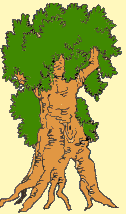CEIBA PENTANDRA
CEIBA PENTANDRA
CEIBA PENTANDRA
French: cheesemaker, Kapokier; Wolof: Bentenie Goun and Fon: Adjolohoun tin.
Description: the largest tree in the Sahel, 35-60m high, with or without large conical thorns on the trunk and branches. The base of the trunk with large winged buttresses. Crown spreading or rounded and more or less dense. The bark is variable, smooth, often dark gray, sometimes green (with gray horizontal lenticels). Pink to red slice. The twigs are glabrous. The leaves alternate, digitate compound, with 5 or 15 glabrous leaflets, with entire margin (sometimes denticulate top on stump shoots). Petiole longer than the middle leaflet, 10-20cm long. White flowers, 3 to 4cm in diameter, corolla with 5 petals united at the base. The fruits resemble spindle-shaped capsules 10-30cm long, ocher to pale brown, with 5 valves, usually opening on the tree, containing black spherical seeds in a gray or white fluff.
Flowering and fruiting: in the dry season, when the first leaves appear. The fruits, usually before the first rains.
Ecology: planted in villages in the Sahelian, Sudanese and Guinean zones. Spontaneous in gallery forests and humid forests. Sensitive to bush fires.
Distribution: pantropical species, from Senegal to Cameroon, Central America, West Indies, Indo Malay continent.
Use: The roots are used as an emetic, against chronic dysentery, rickets, tetanus, and hypertension. The bark is a galactagogue, vermifuge, aphrodisiac, emetic, female sterility, cough, malaria, diarrhea and dysentery, gastralgia, tooth decay, gingivitis. The twigs are vomiting. The leaves are used for mental illnesses, whitlow, abscess, conjunctivitis, and fever.
Add a comment






















